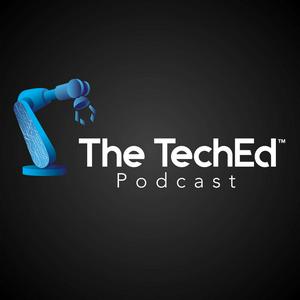Demystifying Nuclear Power: Recommissioning, SMRs, and a Clean Energy Future - Patrick O'Brien, Director of Government Affairs and Communications at Holtec International
With energy consumption skyrocketing and sustainability challenges becoming more pressing, nuclear energy is once again in the spotlight.But while its potential is undeniable, there's still a lot of public misperception of nuclear. For many, the words "nuclear energy" conjure outdated fears that overlook decades of innovation, safety advancements, and the vast opportunities in nuclear power today. In this episode of The TechEd Podcast, host Matt Kirchner sits down with Patrick O’Brien, Director of Government Affairs and Communications at Holtec International, to demystify nuclear energy and explore its transformative potential as a cornerstone of clean, sustainable power.Patrick shares insights into the nuclear "renaissance" and its critical role in balancing growing energy demands with environmental responsibility. From the recommissioning of Michigan’s Palisades Nuclear Plant to the groundbreaking possibilities of small modular reactors (SMRs), Patrick provides an insider’s perspective on cutting-edge technology, workforce opportunities, and nuclear’s future in the United States.Inside this episode:Breaking down nuclear vs. wind and solar: land usage, energy density, and why nuclear leads in efficiencyHow Holtec is rewriting history with the unprecedented recommissioning of Palisades Nuclear PlantSmall modular reactors (SMRs): the future of nuclear energy and their game-changing scalabilityHow public perception of nuclear energy is evolvingInside the nuclear workforce: training, skills, and career paths shaping the industry's future3 Big Takeaways from this Episode:Nuclear energy offers unmatched efficiency and reliability.A single nuclear plant can produce 1,000 megawatts of consistent power on a fraction of the land required by solar or wind, which would need 3,000 megawatts of capacity to achieve the same output. Nuclear’s 24/7 reliability makes it indispensable for meeting growing energy demands sustainably.Holtec International is rewriting nuclear history by recommissioning a decommissioned power plant.The Palisades Nuclear Plant in Michigan is the first facility in history to reverse a permanent shutdown order, requiring unprecedented collaboration with the NRC and innovative regulatory actions. This groundbreaking project could set a precedent for extending the lifecycle of nuclear facilities worldwide.The nuclear industry offers diverse career opportunities for every education level.From operators with high school diplomas to engineers with advanced degrees, the field provides clear pathways for growth, as seen in one worker’s rise from janitor to control room supervisor. Nuclear also sets itself apart with rigorous training programs, where operators must retrain and pass exams every six weeks to stay certified.Resources in this Episode:To learn more about Holtec International visit: holtecinternational.comLearn more about the recommissioning of Holtec Palisades in MichiganOther resources mentioned:Access the Department of EnergWe want to hear from you! Send us a text message.Instagram - Facebook - YouTube - TikTok - Twitter - LinkedIn

